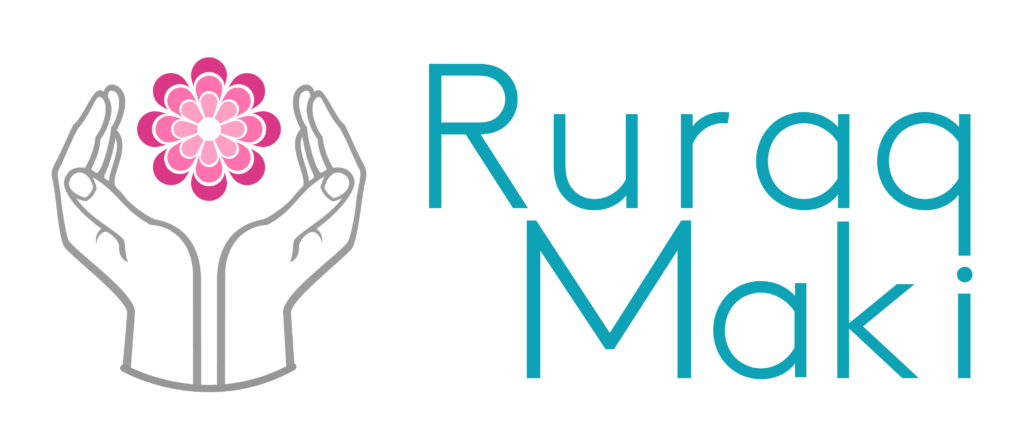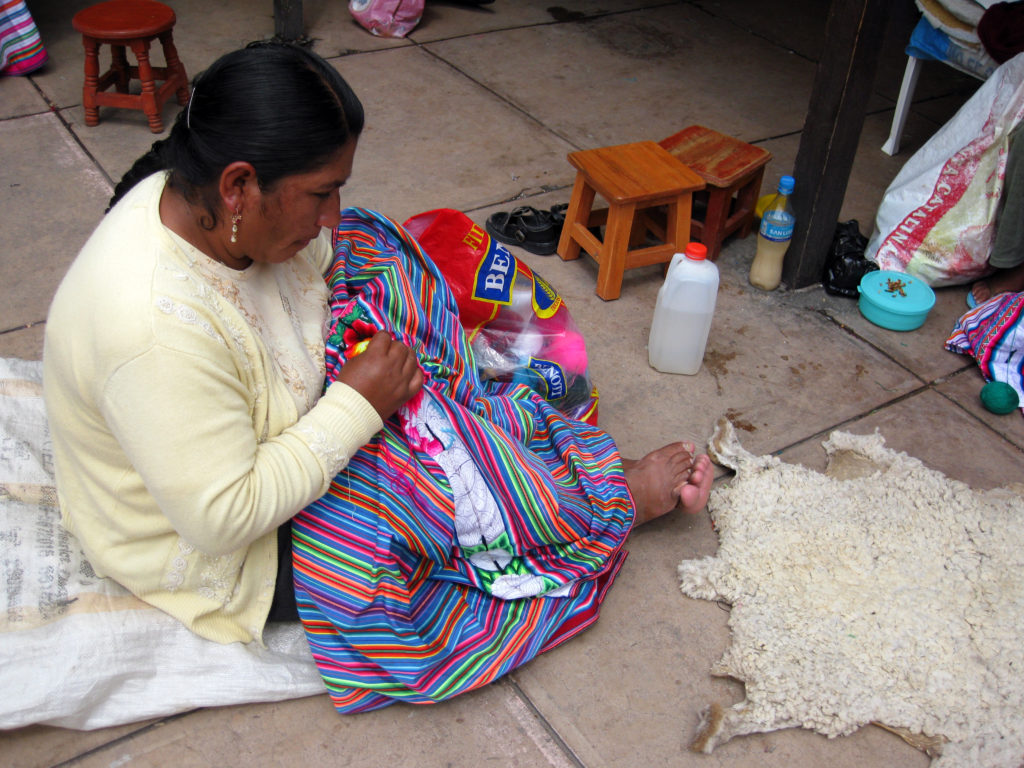In our last post we walked you through how the weaving for a manta is done and what materials are typically used. In today’s post we will discuss how the women embroider the manta.
Ayacuchan manta is unique in that it is the only manta that is traditionally embroidered. Although other communities are now sending manta to Ayacucho to be embroidered, the embroidery motifs (flowers and birds) originated in Ayacucho and Huanta. Since the turn of the century, this style of manta has been used in the department of Ayacucho.
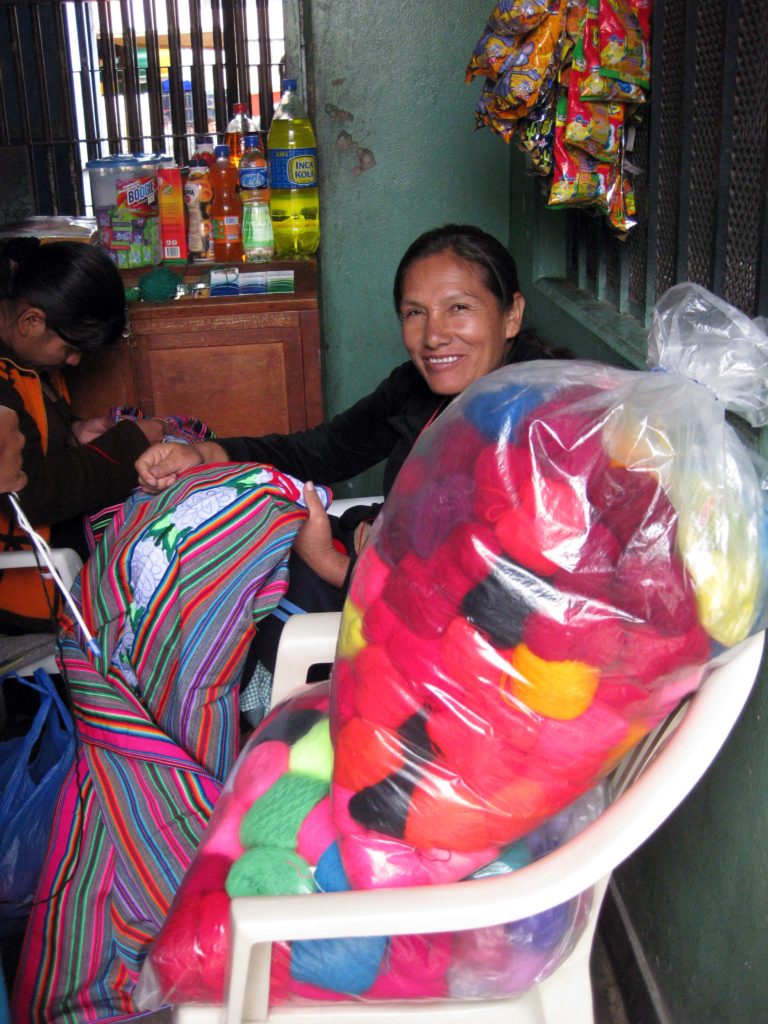
Designs have evolved, most notably the width of the embroidery has increased and the embroidery has become more complex. Each individual woman has a slightly different take on the embroidery. While all embroidery features flowers and birds, the stylization and color of these items vary slightly woman to woman.
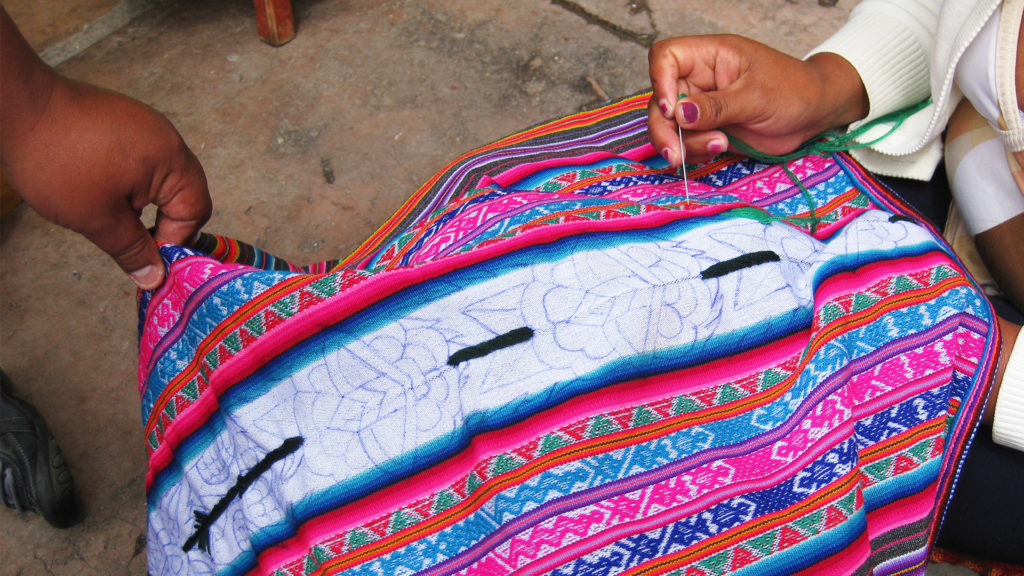
The first step in the process is the women draw the embroidery pattern onto the white swatch that runs down the manta. There are two embroidery styles: Ayacuchan which runs vertically and features parrots and flower, and Huantan which runs horizontally and features peacocks and flowers.
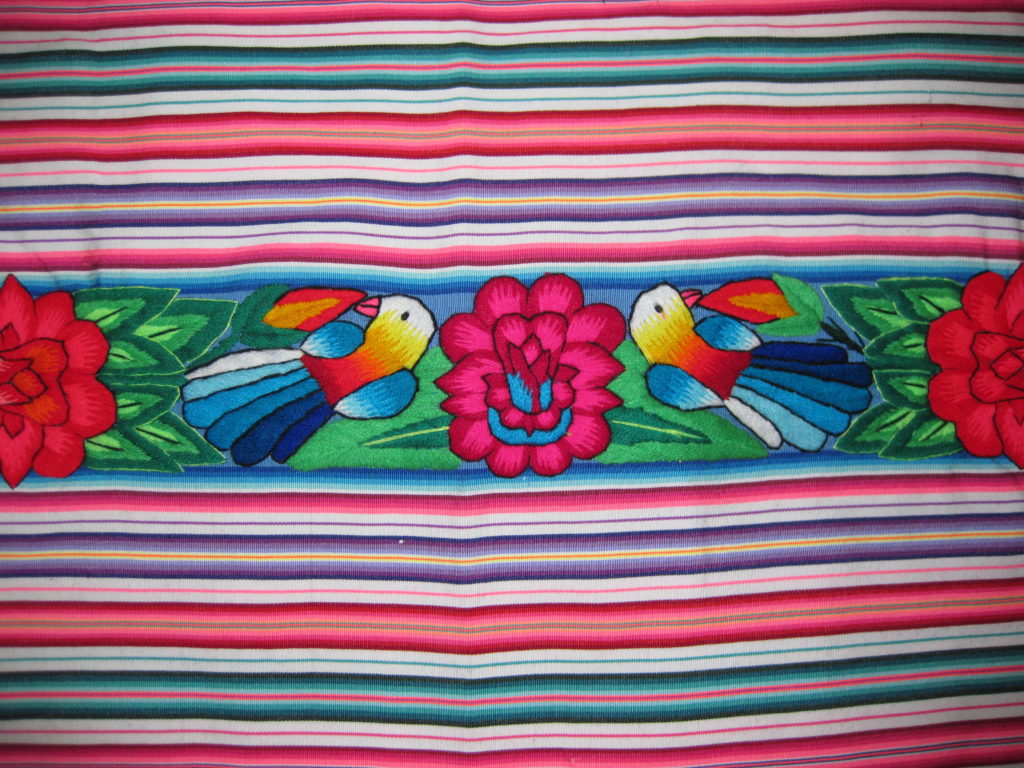
Each piece is one of a kind. Initially, the embroidery was far simpler and the width of the embroidery narrower. Flowers and birds had only 2-3 colors, and were basic in form. Now a single flower can include up to 6 colors, as the embroidery has evolved to have a gradient color pattern. One bird can have up to 8 colors depending on the style and size. One manta takes 8-10 hours to embroider.
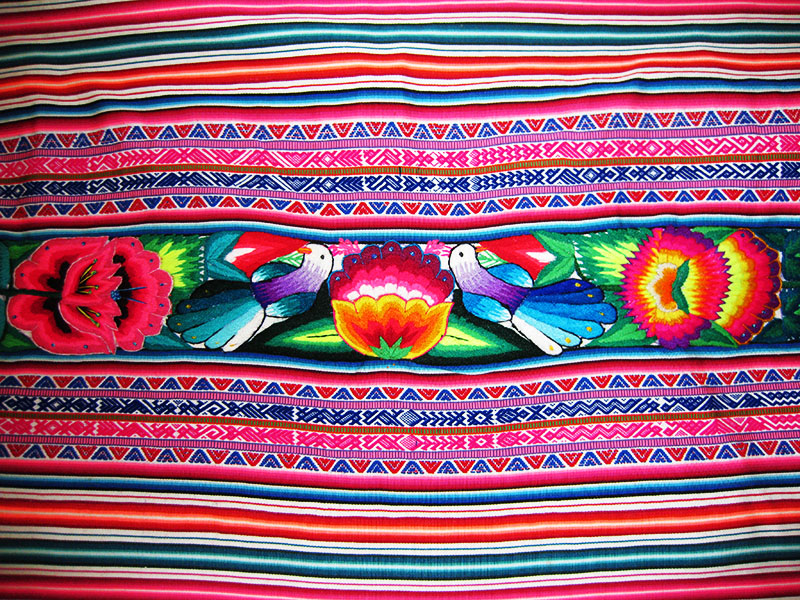
Finally, the embroidery is ironed, which reduces the tension of the embroidery thread and allows the embroidery to lay flat.
For more details on how you can use it in our modern world, check out our next post.
